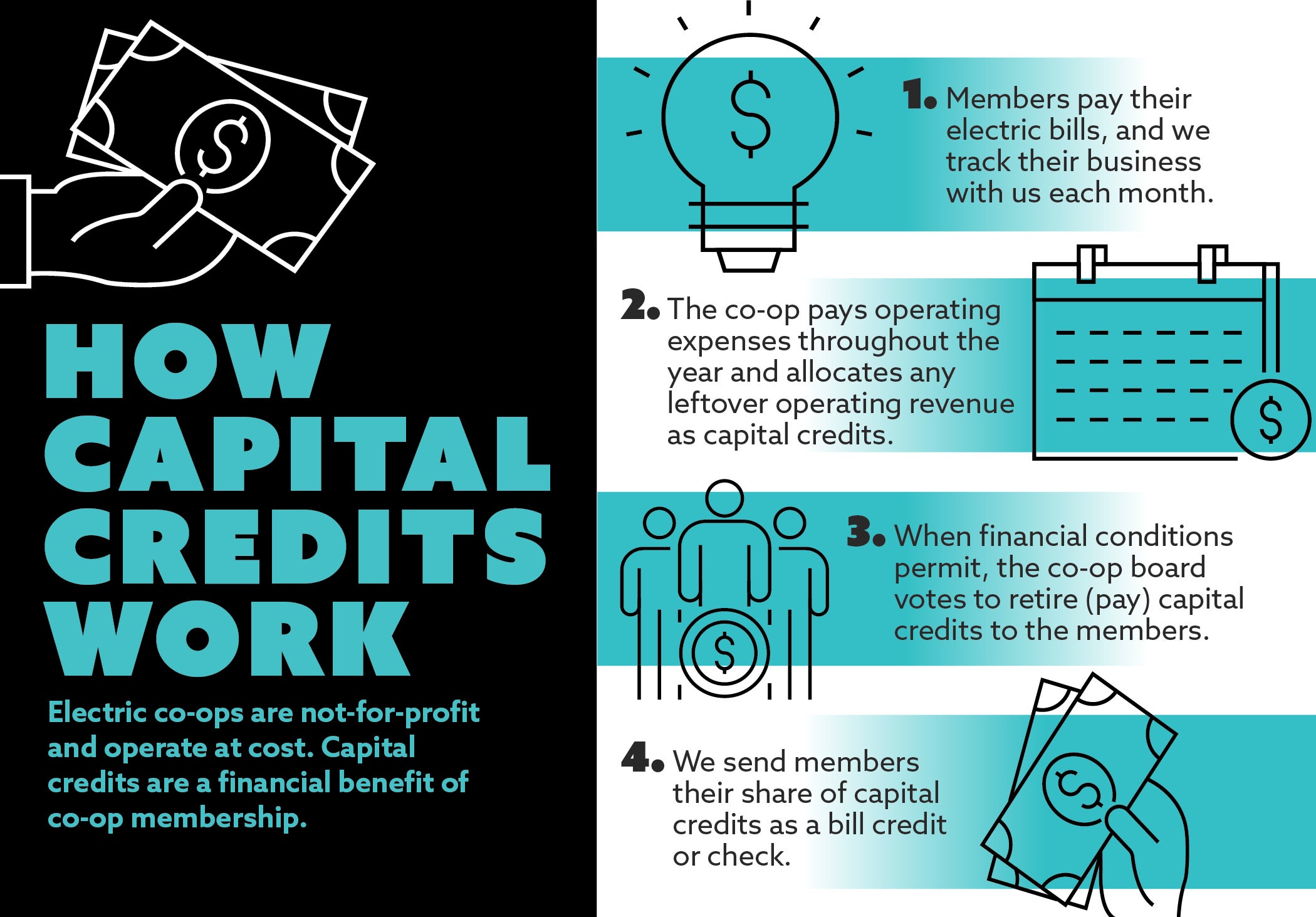Office Phone: 800-696-6552 | Pay By Phone: 855-939-3832
Patronage Capital Credits

The retirement of patronage capital credits is a tangible demonstration of member ownership in Consumers Energy.
As a cooperative that belongs to the members it serves, Consumers Energy operates as a not-for-profit utility. Any “profits” made by the cooperative are referred to as margins. At the end of each year, the margins are allocated to each member’s patronage capital credit account in proportion to the amount of electricity purchased after all statutory and reserve requirements are met. From the time the margins are generated until they are returned, this money is put to work within the cooperative, minimizing debt financing and strengthening our financial position.
Your elected Board of Directors must first consider the financial condition of the co-op and the needs for capital funds for coming years before distributing patronage capital credits. The patronage capital credit amount is determined by the board and is set at a level that maintains the financial integrity of the co-op. The board evaluates Consumers Energy’s equity goals, the patronage capital credit rotation plan, the cost of borrowing money, plant growth, and storm reserves.
Please contact Consumers Energy at 800-696-6552 or info@consumersenergy.coop with questions about your portion of the retirement or the patronage capital retirement process.


